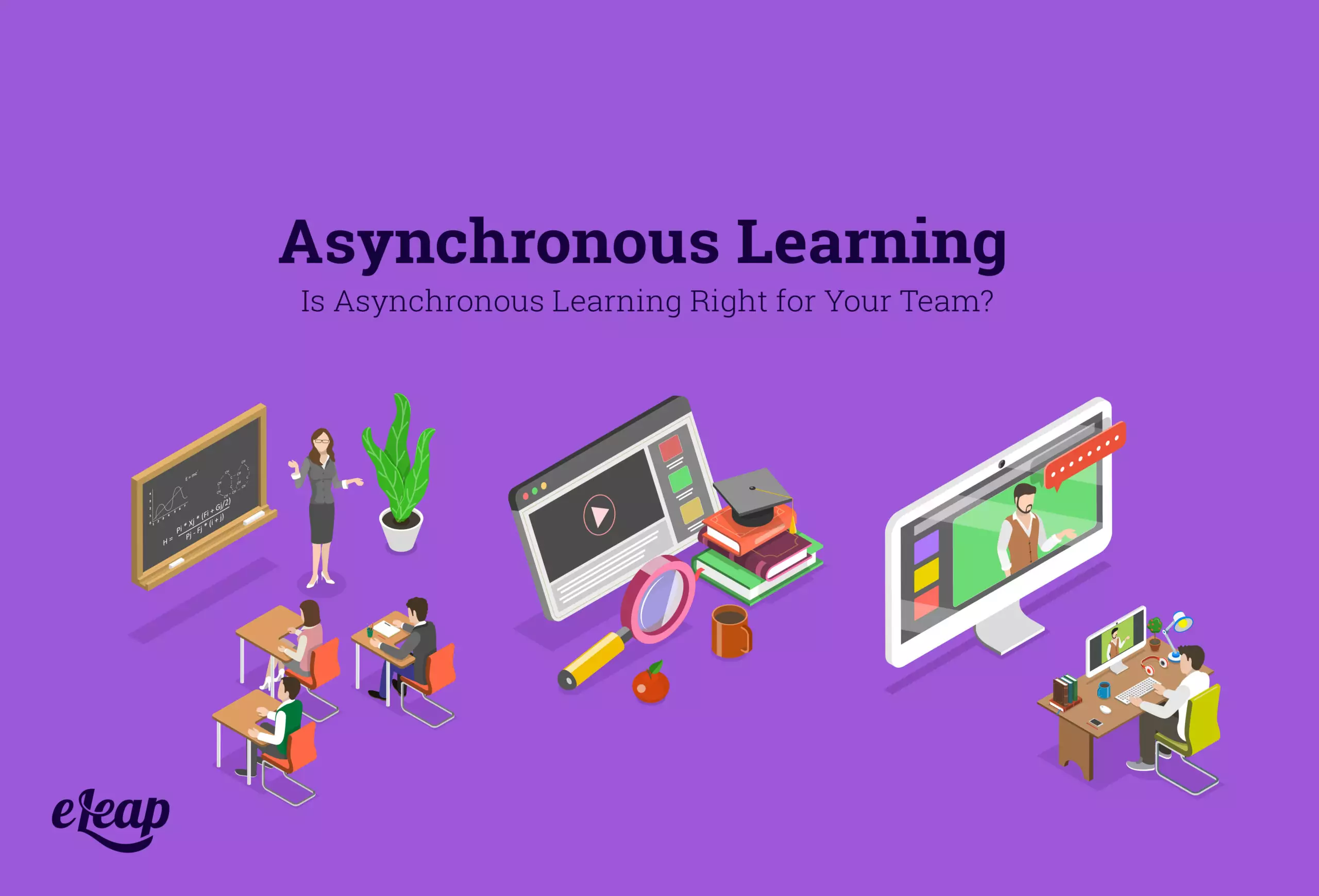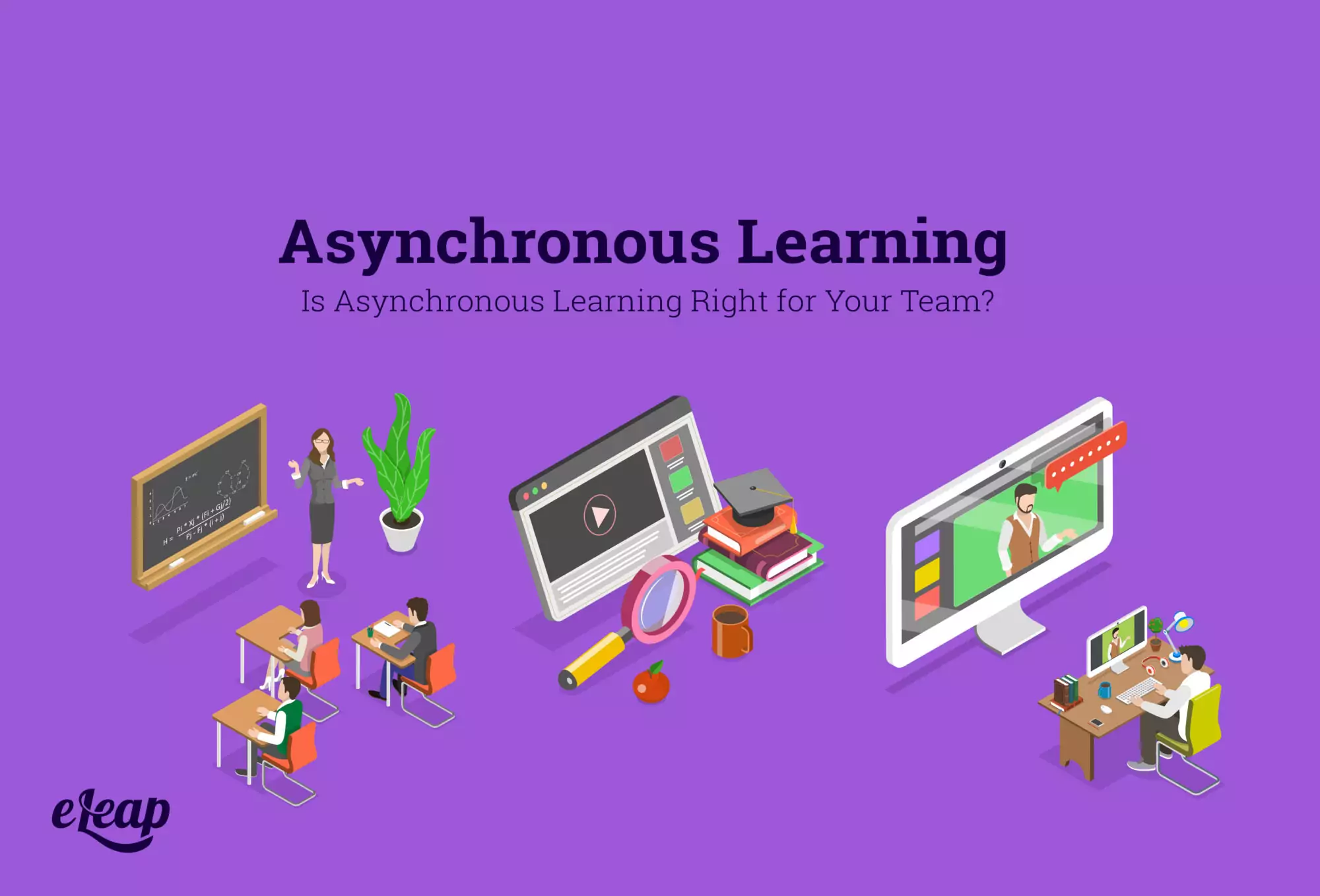Asynchronous Learning
Is Asynchronous Learning Right for Your Team?

If you have gone through workplace training before or taken any self-paced online courses, then you have been participating in what is known as asynchronous learning. This style of learning happens when the instructor and the learner are not both participating in the education at the same time.

So instead of having an instructor teaching you while you take notes, such as in an academic classroom, the instructor has pre-recorded or pre-created a lesson. Then you, the student, go through the material on your own. When you are finished, the instructor will assess your progress on their own time. This process is called asynchronous learning.
There are many benefits to this type of learning, as well as its counterpart: synchronous learning.
The Pros and Cons of Asynchronous Learning
Before deciding what type of learning is best for your workplace, here are some pros and cons to consider about asynchronous learning.
- Pro: It saves you money. Asynchronous learning is typically more affordable than live training. Because it doesn’t require travel and speaker fees, it can help keep your training budget in the black. But asynchronous learning still involves an instructor, so you don’t have to worry about robotic lessons that aren’t engaging.
- Con: It can feel isolating for learners. Many people learn best when they have a group discussion or a chance to ask questions at the moment. Asynchronous learning can feel like the student has to teach themselves at times.
- Pro: It’s a more flexible option. Many adults in the workforce have other responsibilities at home and can’t always choose to give up more of their time for training events. Asynchronous learning can happen anywhere at any time, which offers them the flexibility to maintain their life’s balance.
- Con: There is no instant correction for misunderstandings. If your training involves safety or legal compliance issues, this could be a problem. You’ll want to be able to correct mistakes immediately so that bad habits don’t become learned habits.
- Pro: It gives learners more autonomy. Allowing your team to choose when and how they will work through educational materials empowers them. This is a great way to motivate employees to continue working on their education because they will feel like they have the practical ability to make the training work for their needs.
- Con: It does require more self-discipline. On the flip side of the last point, asynchronous learning may require more management oversight because there is no live event holding employees accountable. You will have to make sure that the course objectives are being met regularly.
- Pro: Asynchronous learning is easy to scale. Because you can set up an LMS or an e-learning course platform that nearly runs itself, it’s far easier to scale your training program. Any new employee can be easily added to the platform to begin their training in moments.
When to Use Asynchronous Learning
Given the pros and cons above, when should you choose asynchronous learning? Consider these things:
- Does your team’s schedule simply not allow for synchronous learning? In this case, asynchronous learning is your best tool.
- Do you need to allow your team to control their own learning pace? If you have many different types of learners or many levels of skill and knowledge present on your team, you may need to choose asynchronous learning to cater to each individual.
- Do you want access to multiple experts on a topic rather than a single trainer? Asynchronous learning allows you to introduce your employees to many instructors on one topic.
- Do you need the ability to scale your training for more team members in the future? This is an essential consideration for growing organizations.
If these are not the most important factors for your team, consider the benefits of synchronous learning.
When to Use Synchronous Learning
Synchronous learning means that your team will be attending live training. This could be in person, over the Internet, or some combination of both. The key for this type of training is that the instructor is available immediately for questions and feedback. Here are some situations where you may want to choose this type of learning over another:
- If you are training a safety or compliance skill and need to ensure immediate feedback to prevent unsafe behaviors.
- If you want your team to improve their collaboration skills through group discussion with the instructor.
- If you want to impart specific knowledge from a specific industry expert, such as a motivational speaker.
These situations may be better suited to a live event rather than pre-recorded materials. But there is good news. You may not have to choose between one or the other.
When to Combine Synchronous and Asynchronous Learning
Many offices combine both types of learning into a robust training program. This allows employees to take advantage of both types of material. For example, a trainer may offer a pre-recorded webinar and become available for a live question-and-answer session at a specific date. This would allow your team to watch the webinar when it works best for their schedule and reduce the time spent in the group discussion.
Another good way to combine synchronous and asynchronous learning is to attend a live training event but return to the office with a workbook or other materials to foster a deeper understanding of the topic later.
Asynchronous Learning Has the Advantage in the Digital Age
The real power of asynchronous learning is its strength for a hybrid or virtual office. In today’s global business world, it’s simply not always possible for everyone to attend a training event simultaneously. By offering recorded training, an LMS platform with multiple training courses, and other types of self-paced materials, employers are working with their teams instead of against them.
Lean into the technology that allows you to cater to many learning styles and needs. This is the best way to empower your employees to improve their skills and take action when and where they can. Asynchronous learning helps you accomplish this objective.